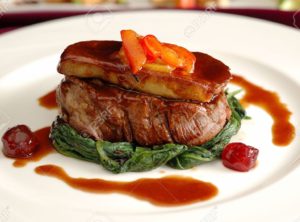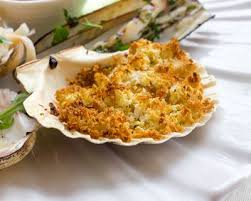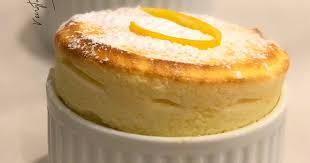In La Luministe, I use Berthe Morisot’s eating habits as a way to develop her character. Berthe had a complicated relationship with food. Today we would say that she was borderline anorexic, but in the 19th century there wasn’t a term for this. She would have been thought of as having a delicate constitution. Eating very little was also considered feminine. *Shiver* In any case, Berthe’s response to events often affected her eating.

An episode from her childhood leaves her equating eating with powerlessness. When Berthe’s governess is alarmed by how little her five-year-old charge eats, she makes Berthe eat until she vomits. Years later, when Berthe’s mother holds a dinner party that’s really a marriage market for a daughter who has no wish to marry, Berthe’s throat still closes at the thought of the rich fare planned for dinner, Tournedos Rossini—filet mignon fried in butter, topped with foie gras and a Madeira demi-glace sauce.

Several times during the course of the novel, Berthe suddenly loses her appetite when someone refers to the man she secretly loves but whom she can neither marry nor mention. She can’t control her love, but she can control when she eats.
When Berthe is happy, she eats. After scarcely surviving the siege of Paris during the Franco-Prussian war, when Parisians came to consider horsemeat and rat paté a feast for kings, Berthe was finally able to visit her sister in Cherbourg. The joy of being reunited with her sister Edma, the fresh air—far from the stench of death—and the freedom to paint once again ignites her appetite for the bread and butter, cheese, and pastries that her sister offers.
She seated me near the fire and proceeded to stuff me with all of the foods
I had missed. A cup of tea offered a sharp tang. Cream softened it. The yeasty
taste of real bread contrasted with velvety dark chocolates. Heaven! I could
have spent the entire afternoon studying various combinations of flavors.
Later in life, at a dinner party she gives for the other Impressionists, Berthe reflects upon the fact that she’s growing plump. But she doesn’t mind, because she’s happy with her small family, her husband and daughter, and she has control over what has become a successful career.
Describing a character’s eating habits doesn’t have to be restricted to the protagonist. A line or two can quickly develop a secondary character. Berthe shows her affection for Claude Monet by serving Coquille St. Jacques especially for him, to remind him of his youth on the Normandy coast, eliciting his nostalgic cry of “La mer!”

I also use food as a way to emphasize Edgar Degas’ bachelor status,
at the mercy of an Italian housekeeper whom he complained prepared the
same meal every night—boiled veal and macaroni, with preserves made
from no fruit he had ever identified.
When Degas joins the Morisots for dinner, he is so delighted to be served fine food that he slurps his leek soup and loses track of the conversation when he smells the lemon soufflé that the maid brings into the dining room.

Differentiating between the times when Berthe found food abhorrent and when she adored it conveys her emotional state without announcing that she has an eating disorder. And Degas’ appreciation for a fine meal says everything about the drawbacks of bachelorhood. What characters eat tells us quite a bit about who they are.
